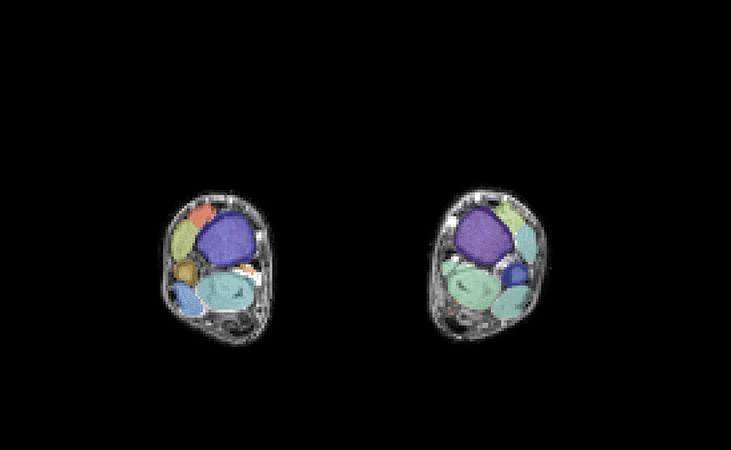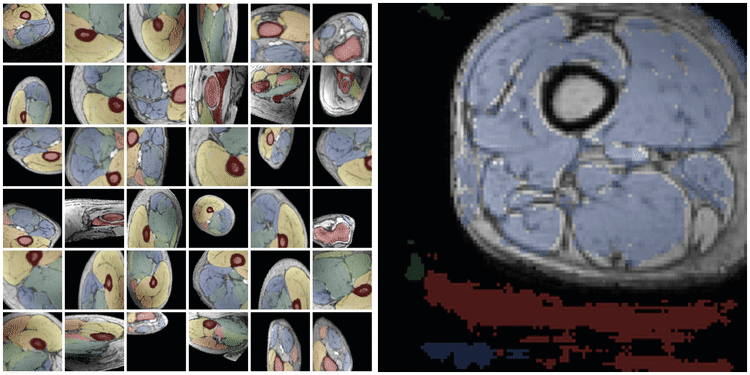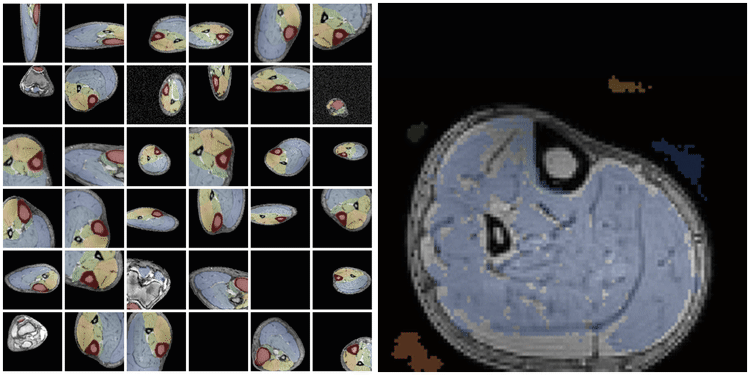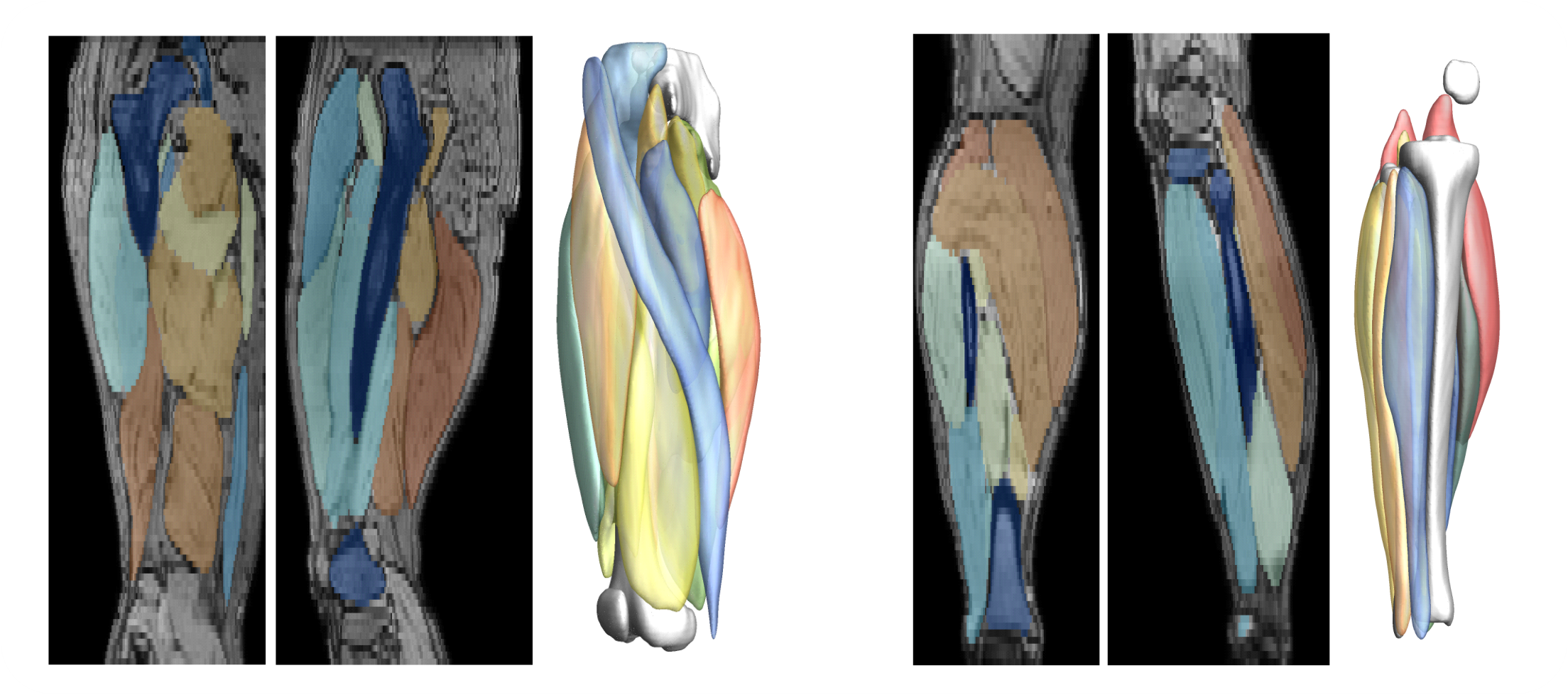Full leg AI segmentation using CNN
Tools for muscle segmentation
The SegmentData function within the QMRITools package is designed to automatically segment lower extremity muscles of the hip, thigh, and leg. This function is an essential tool in the Segmentationtools package, leveraging advanced neural networks for precise muscle segmentation.
Function Overview
SegmentData employs four neural networks:
- Side and Location Recognition: Two networks identify the side (left/right) and location (hip/thigh/leg) of the muscles.
- Muscle Segmentation: Two networks perform the detailed segmentation of the muscles.
The networks are trained on 20 manually segmented thigh and leg datasets and currently operate on out-phase gradient echo images, which can be acquired or reconstructed using Dixon-based methods. The implementation supports any data size, with optimal performance on images with an in-plane resolution of 1-2.5 mm and a slice thickness of 5-10 mm. The latest trained networks are available as .wlnet files within the QMRItools package package, and .ONNX files can be requested.
Architecture and Training
The segmentation networks are based on the UNET architecture with ResNet convolution blocks that contain short skip connections. The block diagrams of the encoding and decoding blocks used in our UNET architecture are shown below.
Data Augmentation and Training
For training, data is heavily augmented using various techniques such as scale, skew, rotation, translation, noise, sharpen, contrast, and brightness adjustments. Training is conducted with a batch size of 2 and a patch size of 32x112x112 voxels, with 256 datasets seen per epoch. Patches are selected after data augmentation. Training typically continues for 200-300 epochs, taking approximately 8-12 hours. Below are examples of the first 100 epochs for the upper and lower leg. The resulting segmentations from both networks are displayed.
Using SegmentData as a Script
To use SegmentData as a script, you can refer to the README available on GitHub. The README provides detailed instructions on how to implement the function, ensuring users can effectively utilize the tool for their specific research needs.
Features Include
- Automated region recognition
- Memory optimized segmentation
- CPU and GPU support
- Automated patching and merging
- Standardized muscle labels




